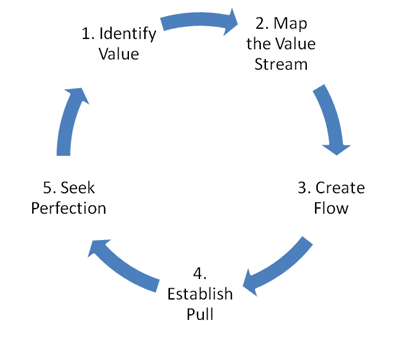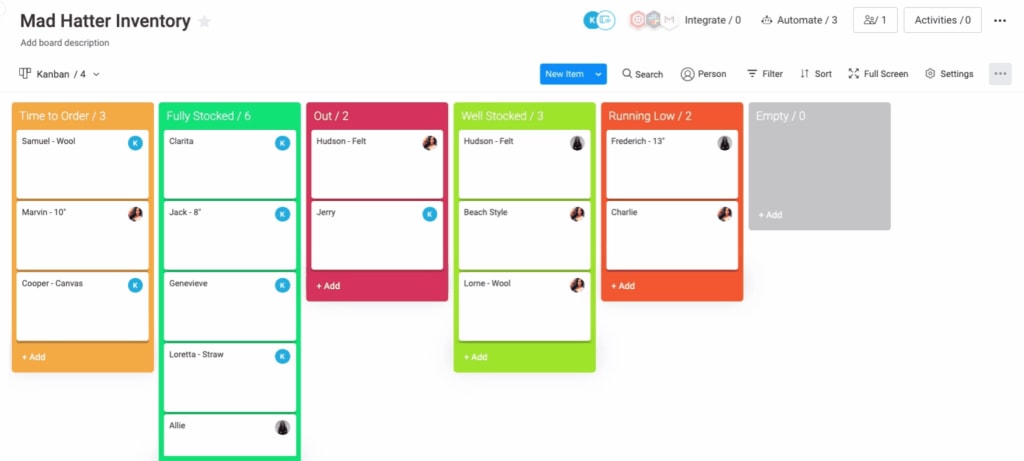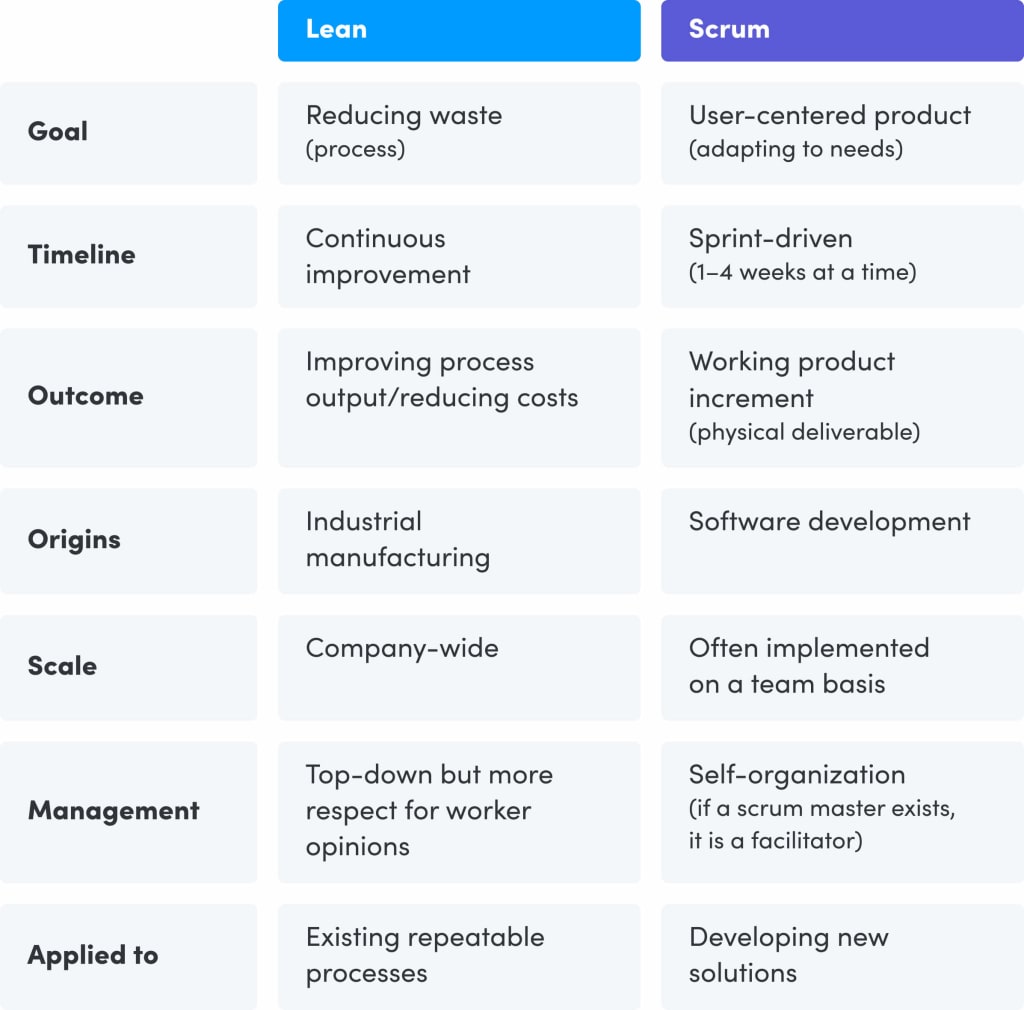There is no shortage of project management solutions in the SaaS marketplace The “best” solution often depends on the type of organization, the specific project, and the personnel involved.
In this blog, we’ll take a look at the practices that fall under the umbrella of lean project management and how you can optimize them with monday.com’s work management software. If you’re curious about other methodologies, check out this blog post or get started with a free trial on monday.com.
What is lean project management?
According to the Project Management Institute (PMI), “lean” is a “quality improvement and management philosophy” where quality, production time, and cost are improved by eliminating waste.
Lean project management eliminates wastes such as “excessive documentation, excessive planning and control, unproductive meetings, avoidable rework, excessive definition of detailed requirements, unproductive multitasking,” and so on.
The concept of lean was adapted from the Toyota Production System’s goal of eliminating the three types of deviations: Muda (waste), Mura (unevenness), and Muri (overburden).
Muda: any process that does not add value
Mura: inconsistency and unevenness that causes waste
Muri: unreasonable burdens that cause stress and burnout
Lean project management focuses on systematically eliminating all forms of waste, so team members are always working efficiently.
What are the 5 core principles of a lean project?
According to the Lean Enterprise Institute, the five core principles of lean are as follows:

Image via lean.org
- Identify value: as defined by the customer — timeline, requirements, expectations, etc.
- Map the value stream: all the steps necessary to complete the project — determine (and eliminate) steps that do not create value. This value stream can be visually displayed on a Kanban board.
- Create flow: With waste removed, it’s important to eliminate (or minimize) potential bottlenecks and unnecessary dependencies
- Establish pull: Now that flow has been optimized, customers can get the final product in a more timely fashion
- Seek perfection: While, arguably, there is no such thing as perfection, practicing lean means you are constantly seeking improvement — this step is the first in ensuring lean thinking and process improvement becomes embedded into corporate culture
What are the benefits or advantages of lean project management?
Most organizations switch or already rely on lean project management because it can:
- Reduce lead times
- Lower inventory and storage costs
- Decrease overall costs
- Improve productivity and efficiency
- Improve quality
- Create higher customer satisfaction
Teams of any size can get started fast with lean project management on monday.com.
Top lean project management tools
There are several techniques to implement a lean project management approach: Kaizen, Poka-Yoke, S5, etc. Many of these techniques are specific to lean manufacturing.
Plan-Do-Check-Act (PDCA) Cycle
This problem-solving and change management approach is a continuous cycle of planning, doing, checking (or studying), and acting. It’s a good way to test improvement measures on a smaller scale before making wider changes to practices and procedures teams have in place.
Kaizen
Kaizen is a Japanese word that has come to mean continuous improvement when it relates to the lean methodology and principles. Its origins lie in post-World War II Japan, where factory workers at Toyota saught to prevent defects in automobile assembly lines.
Kanban
At monday.com, we offer a solution that works in pretty much any industry — Kanban is used by project management teams to plan, track and manage any project from start to finish.

Kanban empowers lean project management teams to effectively collaborate — easily assign and prioritize tasks, share documents and other files, and see what team members are doing and when they are doing it.
Kanban boards on monday.com help:
✓ Automate routine work: Due date reminders, update notifications, and other code-free automations simplify workflows.
✓ Visualize your projects: stay on top of all projects and get clarity
✓ Gain data-driven insights: High-level dashboards and charts help to monitor a project’s progress at every stage
How is lean different from scrum?
Before we dive into how lean and scrum are different, here is how they are the same.
Both seek to improve outdated project management methodologies.
Both are project frameworks designed to help improve success rate.
Both value close collaboration between team members and customers.
Both require continuously testing assumptions, adjusting the plan as new information is uncovered.
Both often have daily “stand-up” meetings where team members share what they did yesterday, what they’ll do today, and what obstacles they may be facing.
The goal of a lean mindset is to optimize ongoing processes and reduce waste. Scrum, on the other hand, is an approach for planning and production where team members collaborate with stakeholders and work in short sprints to deliver more streamlined, “no fluff” end products.
Lean is constant, an ongoing quest to improve and optimize all processes. Scrum is short-lived, yet repetitive (sprints). This chart outlines the key differences:

For a more detailed reading on the differences, check out Lean vs. Scrum: What’s the difference?
Frequently asked questions
Is 5S the same as Six Sigma?
Is Kaizen a Six Sigma tool?
The primary difference between Kaizen and Six Sigma is that Six Sigma uses oriented technical data to solve product deviations, while Kaizen focuses on improving work environments to in turn have a positive impact on overall performance.
Improve project outcomes with lean project management
Applying the tried and true methods of the manufacturing industry to projects can result in big wins for teams of all sizes and industries.
To organize it all, we recommend you use work management software like monday.com that has templates, automations, and other features that make everything visual and accessible.
